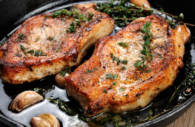
16 words that mean totally different things than they did pre-Internet
Technological change, as we know, tends to provoke linguistic and cultural change, too.
It’s the reason why, several times a year, dictionaries add in new and trendy words.

But more interesting than the new words are the old words that have gotten new meanings, such as cloud, tablet and catfish, which have very long pre-Internet histories.
So here, we look at words that had totally different meanings than they did when we were all kids.
Block
Then: “to be placed in front of something, such as a road or path, so that people or things cannot pass through.”
Now: to prevent someone from contacting you on a social network like Twitter, or from viewing your profile.”

Catfish
Then: “a freshwater or marine fish with whisker-like barbels around the mouth, typically bottom-dwelling.”
Now: “a person who sets up a false personal profile on a social networking site for fraudulent or deceptive purposes.”

Cloud
Then: “a visible mass of particles of condensed vapor (as water or ice) suspended in the atmosphere of a planet (as the earth) or moon.”
Now: “any of several parts of the Internet that allow online processing and storage of documents and data as well as electronic access to software and other resources.”

Footprint
Then: “a track or mark left by a foot or shoe.”
Now: “a unique set of characteristics, actions, etc., that leave a trace and serve as a means of identification.”

Friend
Then: “one attached to another by affection or esteem.”
Now: “to add a person to one’s list of contacts on a social-networking website.”

Follow
Then: “to go or come after or behind someone or something; to pursue in an effort to overtake.”
Now: to subscribe to someone’s updates on social media.”

Like
Then: “to be suitable or agreeable to.”
Now: “to indicate one’s enjoyment of, agreement with, or interest in website content, especially in social media.”

Meme
Then: “an idea, behavior, style, or usage that spreads from person to person within a culture.”
Now: “a cultural item in the form of an image, video, phrase, etc., that is spread via the Internet and often altered in a creative or humorous way.”

Profile
Then: “a representation of something in outline; a concise biographical sketch.”
Now: “the personal details, images, user statistics, social-media timeline, etc., that an individual creates and associates with a username or online account.”

Swipe
Then: “a criticism or insult that is directed toward a particular person or group; a swinging movement of a person’s hand, an animal’s paw, etc.”
Now: “to move the fingers across a touchscreen.”

Tablet
Then: “a flat piece of stone, clay, or wood that has writing on it.”
Now: “a general-purpose computer contained in a touchscreen panel.”

Tag
Then: “to supply with an identifying marker or price; to attach as an addition.”
Now: to link to someone else’s profile in a social media post, commonly a photo or status update.

Text
Then: “a book or other piece of writing; especially : one that is studied.”
Now: “to send a text message.”

Timeline
Then: “a table listing important events for successive years within a particular historical period.”
Now: “a collection of online posts or updates associated with a specific social-media account, in reverse chronological order.”

Troll
Then: “a dwarf or giant in Scandinavian folklore inhabiting caves or hills.”
Now: “a person who sows discord on the Internet by starting arguments or upsetting people.”

Tweet
Then: “a chirping note.”
Now: “a very short message posted on the Twitter website.”









